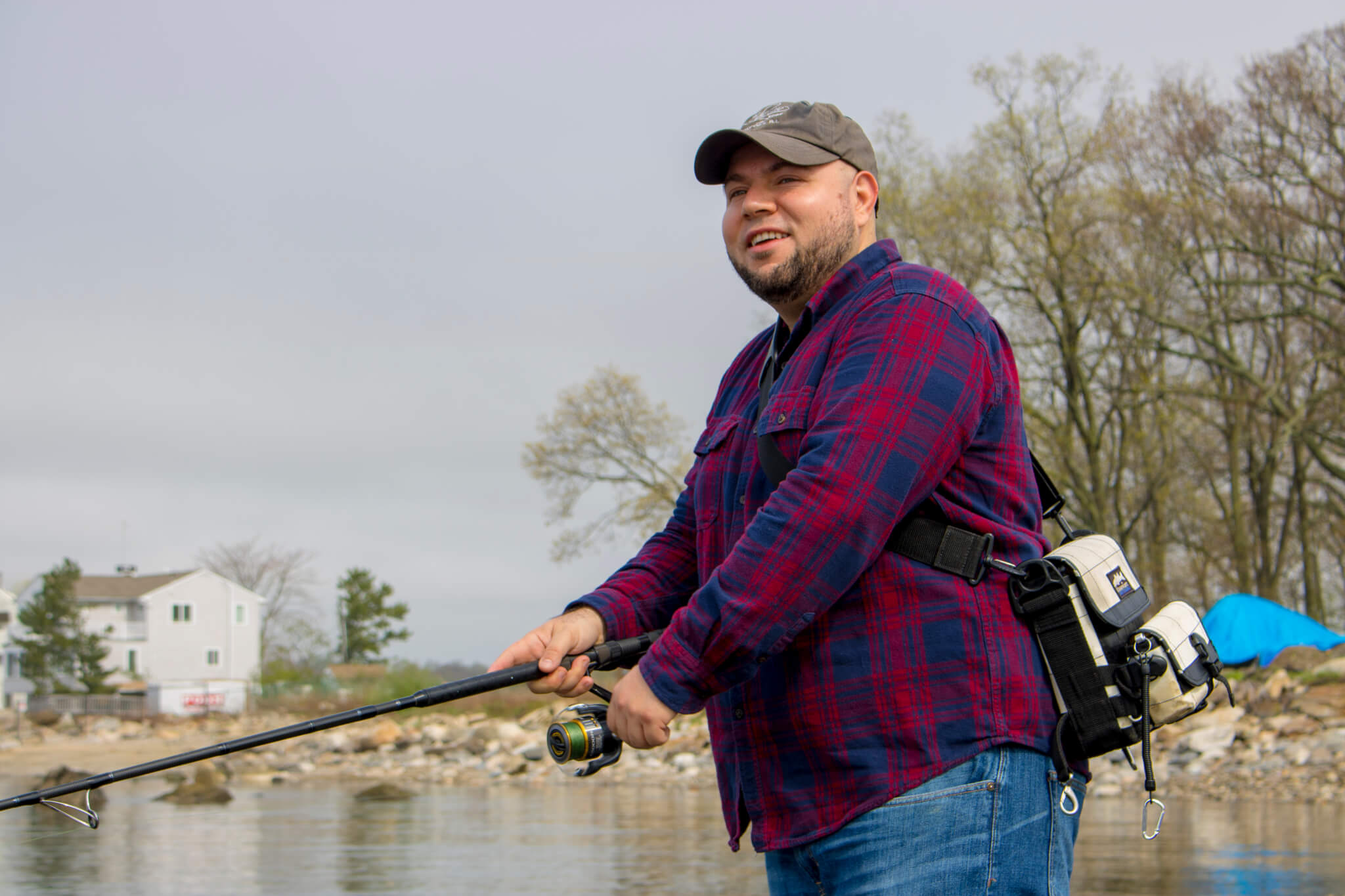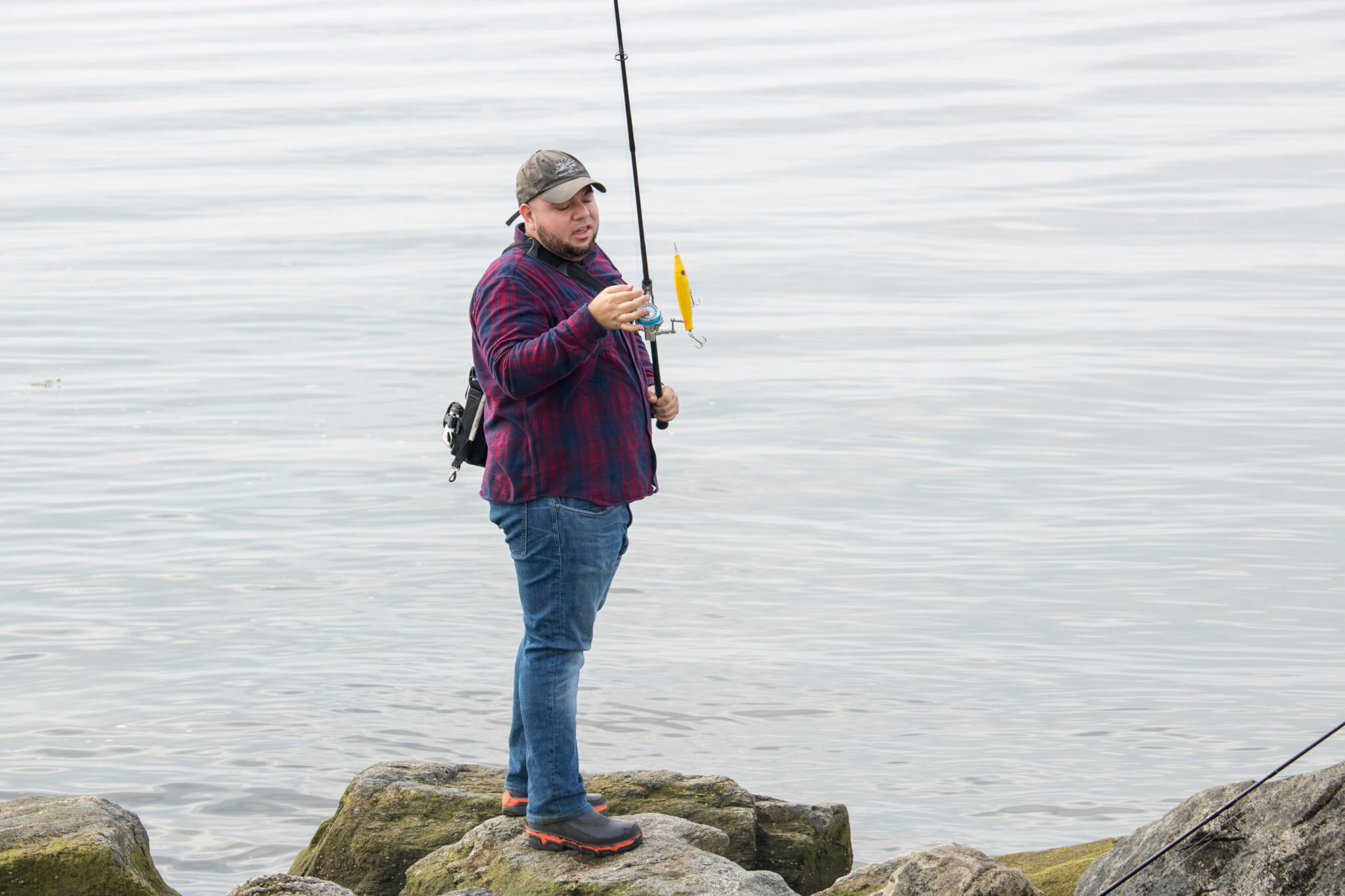Respecting fish, a conversation with a Long Island Sound surfcaster
Respecting fish, a conversation with a Long Island Sound surfcaster
May 30, 2019 | By: Christianne Marguerite
 © The Nature Conservancy in Connecticut (Andrew Benson)
© The Nature Conservancy in Connecticut (Andrew Benson)
Local to Westport, CT, fisherman Gianfranco Zaffina has a deep connection to Long Island Sound. He relies on the water to support his passion for recreational surfcasting, particularly for striped bass. In an interview with The Nature Conservancy, he discusses why he loves fishing in the Sound and his personal choices to protect stripers and the environment in which they live.
I spent a day fishing with Gianfranco Zaffina, a Long Island Sound fisherman from Westport, CT, at Sherwood Island State Park to hear more about why he loves fishing in the Sound and his personal choices to protect fish populations. “Growing up, I loved reading The Fisherman Magazine and Saltwater Sportsman,” says Zaffina. “My parents would bring me fishing at the beach early on, probably when I was 7 or 8. Then I started to freshwater fish a lot more frequently. Once I could drive, I fell for surfcasting and never looked back. It became an obsession.” Zaffina specifically became fascinated with the excitement of fishing for striped bass.
Atlantic striped bass, also known as stripers or rockfish, can be found along the entire stret ch of the U.S. East Coast. They have a long life, living up to 30 years, and can grow up to 5 feet and weigh up to 77 pounds. Stripers are anadromous, spawning in freshwater but living most of their lives in saltwater – including brackish rivers, shallow estuaries and deeper ocean waters. Stripers prefer water temperatures between 52-69 degrees Fahrenheit and many migrate south in the winter, returning to New England when waters are warmer between April and December. Although Connecticut does have some areas where the bass will winter, Zaffina does not fish for those “hold overs” and advocates for others to leave them alone as well. He is also a strong proponent of practices that further sustain the striper population.
ch of the U.S. East Coast. They have a long life, living up to 30 years, and can grow up to 5 feet and weigh up to 77 pounds. Stripers are anadromous, spawning in freshwater but living most of their lives in saltwater – including brackish rivers, shallow estuaries and deeper ocean waters. Stripers prefer water temperatures between 52-69 degrees Fahrenheit and many migrate south in the winter, returning to New England when waters are warmer between April and December. Although Connecticut does have some areas where the bass will winter, Zaffina does not fish for those “hold overs” and advocates for others to leave them alone as well. He is also a strong proponent of practices that further sustain the striper population.
“I strictly catch and release. I, along with many other anglers, see striped bass as one of the most important game fish in the northeast, but the stocks are dangerously low. For the last eight years I’ve done my part to safely release all bass, especially the larger spawning-aged fish which are necessary for the future generations.” – Gianfranco Zaffina
There are many variables an angler – a person who fishes with a rod and a line – must consider when fishing for stripers. Zaffina says that taking the tides, wind, moon phases, bait patterns and water temperature into account is like “solving a puzzle” and contributes to his love of surfcasting, or surf fishing, from the shore, around the Sound. “When things come together and I’m catching, it’s all the more rewarding.” Although he does often fish with friends and family, he enjoys solo trips during favorable tides from sunset to sunrise when fishing is most peaceful and allows him to focus on his craft.
When fishing for stripers, Zaffina typically uses 9 to 10-foot surf rods and spinning reels with braided line. He strictly chooses artificial lures such as bucktail jigs, soft plastics, topwater plugs, or lipped swimmers. “My preferred way to fish for bass is with topwater poppers and spooks. A few friends and I build our own out of wood in the winter,” he says.
 © The Nature Conservancy in Connecticut (Andrew Benson)
© The Nature Conservancy in Connecticut (Andrew Benson)
In addition to his circle of close friends, Zaffina says there is a special bond in the fishing community and he often meets people from all walks of life who “share the same passion and can connect over something so unique.” He views nitrogen pollution – which can trigger algal blooms, deplete oxygen in the water and suffocate marine life – as the most pressing environmental concern facing the Sound. Water quality in the Sound has a direct relation to fisheries and is of importance for the community. “I think the fishing community can do more to get involved. Anglers can get involved with groups like The Nature Conservancy, Save the Sound, or local organizations that address environmental issues directly.” Zaffina suggests anyone who enjoys activities along the Sound – beachgoers, boaters, bird watchers and people who eat shellfish – should care about the water quality because it affects us all and everyone living along the coast has the potential to be impacting it.
“Small things like your car leaking oil, pesticides for your plants, pet waste, fertilizer on your lawn, a bag of trash that blows over – all end up in the Sound and adversely affect the water quality. Homeowners can use safer lawn care practices to stop harmful chemicals from entering storm drains during heavy rains and towns need to continue updating wastewater systems. As more people are aware of their actions and are willing to make certain changes, we can be more proactive going forward to protect the health of the Sound.” – Gianfranco Zaffina
Zaffina does what he can by being actively involved with the Long Island Sound Blue Plan, which has a goal of preserving the Sound’s ecosystems and resources. “The Blue Plan provides information and guidance to agencies, applicants, and the public for how to best sustain the important areas in LIS we all care about. This allows for smarter sustainable development that is compatible with existing resources and activities,” says Christian Fox, outreach coordinator at The Nature Conservancy in Connecticut.
The team assembling the Blue Plan has worked closely with the many communities that depend on Long Island Sound to determine how to best represent them in the Plan documents. This includes mapping the extent of areas crucial to sustaining each existing use to better understand their importance and proactively consider them in the evaluation of new applications. Angling is just one of twenty-nine “Significant Human Use Areas” which, along with fourteen “Ecologically Significant Areas,” are now much better understood and can be explored in an online mapping tool.
While fishing, Zaffina told me that he would like to see more protection for game fish populations in Connecticut. Resource managers like the Atlantic States Marine Fisheries Commission (ASMFC) help states establish quotas and set guidelines on gear and fishing seasons. The Conservancy’s stream connectivity work to protect and increase available spawning habitat for prey fish such as alewife and blueback herring also helps by providing important food sources for stripers. As a local leader in sustainable sport fishing, Zaffina works to inspire others who share similar values to protect and respect local fish populations, healthy habitats and clean water in Long Island Sound.